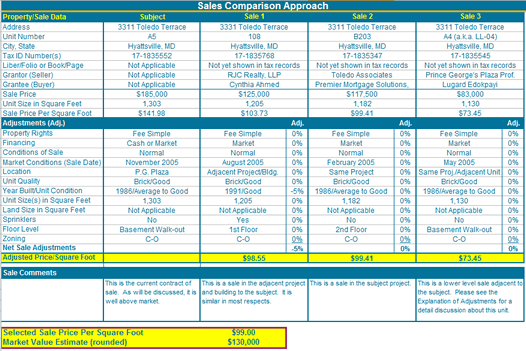There is a disconnect and a misconception between appraisers/assessors and marina owners. It seems the marina owners know something that the appraisers and assessors do not. They know that the sales comparison is only good for “comparison” purposes and as a rough (and I do mean rough) rule of thumb. Rules of thumb make very poor approaches to value. ‘Good for ballparking, but that’s about it.
There doesn’t seem to be any way to close this schism. Lenders want two approaches to value and the cost approach is virtually useless for a marina. It takes less time and effort to do a sales comparison approach than a cost approach for this property type. More importantly, you get your marina cap rates by verifying sales so in this respect most of the work needs to be done anyway. Still, that doesn’t mean that by extension you’ll find sales of marinas with the comparability that you like or that adjustments will flow like honey.
This “great recession” is really driving home how marina purchasers are now buying based on the cash flow the marina is generating. The number of marina sales is staggeringly low. ‘No financing, no sales… basically. Over the past couple of months, I’ve spoken to about a dozen marina industry people who are more than willing to buy and it’s all based on cash flow. None of them would even think of basing any purchase decision on “comparable” sales because they are so few and far between. It’s not worth their effort trying to find the needle in the haystack. Moreover trying to do it like appraisers that verify sales all the time isn’t something they are interested in doing.
 What really makes the sales comparison obsolete today is the glut of listings. The price per slip, acre or whatever is all over the place. The spread between buyers and sellers is much greater than it was prior to the recession so everyone starts farther apart on value. It becomes really hard to do a sales comparison approach when you can find listings that are comparable yet lower because the motivation of the seller is to dispose of it before their financial situation gets worse. It’s like this condominium I appraised about ten years ago that was situated next to a nearly identical building. The adjacent project had five units that were repossessed by a bank that was selling them for about 70 percent of market value. Was the condo project next door, the project where I was appraising a unit, stigmatized? Absolutely. The same thing applies to listings versus sales.
What really makes the sales comparison obsolete today is the glut of listings. The price per slip, acre or whatever is all over the place. The spread between buyers and sellers is much greater than it was prior to the recession so everyone starts farther apart on value. It becomes really hard to do a sales comparison approach when you can find listings that are comparable yet lower because the motivation of the seller is to dispose of it before their financial situation gets worse. It’s like this condominium I appraised about ten years ago that was situated next to a nearly identical building. The adjacent project had five units that were repossessed by a bank that was selling them for about 70 percent of market value. Was the condo project next door, the project where I was appraising a unit, stigmatized? Absolutely. The same thing applies to listings versus sales.
Let’s have a flashback moment to the days when marina sales were a plenty and financing could be had. Even then, the sales comparison approach was usually not reliable. Did I hear you ask why? Two reasons.
- Not enough market stratification was applied to data selection. A basic marina would be different from a repair marina and every other stratification. It was too easy to pick a sale from a different classification and look at its price per slip and say it was comparable. Too much is not always a good thing.
- Buyers were buying based on a different perception of highest and best use. Examples include paying top dollar for a marina that would become a new boat dealership or a waterfront condo project. The highest and best use as viewed by the purchaser was different from what sat there at the time. You can’t compare them because the “conditions of sale” were different. The buyer probably wanted the property more than the seller did… and they paid for it. The bottom line is if “upside potential” adds value to a sale, if you compare it to a property without that upside potential, you need to extract that out. This is the one adjustment you’ll never see in a sales comparison approach and the one that skewed market value more than any other at the time. I’ll spare the discourse on applying upside potential to cap rates; you get the point.
Then there’s the issue of price per slip as a unit of measure. I’ve gone over that headache in a prior blog and I even addressed it a second time. Would a marina with 10 acres and a $20,000 price per slip be comparable to a marina with a half acre and $20,000 per slip? You’re probably thinking “no”, but my surprise is they could if almost all of the 10 acres is useless wetlands. You can do all kinds of permutation analysis to differences in marinas and if you only look at one unit of measure, you may have put blinders on.
Income pays the bills. Income pays the mortgage. Incomes and expenses are necessary for us to extract cap rates from the market. It’s a shame it took a killer recession to reinforce the problems with the marina sales comparison approach and the fact that market participants don’t do it.
John Simpson, MAI
